The 5G connectivity is almost the least of the new Huawei Mate 40 Pro. The new flagship of the Chinese manufacturer comes with striking new features that affect both the interior and exterior and want to make it once again a reference.
To achieve this, it has debuted a new, brand new processor, the 5 nanometer Kirin 9000, but also a renewed design in which its enormous 6.76-inch screen shines with its light. And as a cherry on top, a unique camera module that the 50 MP sensor owns.
Huawei Mate 40 Pro Datasheet
| Huawei Mate 40 Pro | |
|---|---|
| Screen | 6.76-inch AMOLED at 90 Hz Resolution 1,344 x 2,772 pixels |
| Processor | Kirin 9000 octa-core 4 x Cortex-A55 2.05 GHz, 3 x Cortex-A77 2.54 GHz, 1 x Cortex A77 3.13 GHz Mali-G78 GPU (24 cores) Built with 5-nanometer technology |
| RAM | 8 GB |
| Internal Storage | 128 GB (expandable via NM Card) |
| Main Camera | 50 MP Ultravision sensor system, 1.17 micron pixels, f / 1.9 aperture, Ultra wide-angle OIS with 20-megapixel f / 1.8 sensor Telephoto with 12-megapixel f / 3.4 sensor, OIS, 5x optical zoom Laser sensor for the focus |
| Front Camera | 13 MP sensor, 1.23-micron pixels, f / 2.4 3D TOF sensor (biometry and depth) |
| Battery | 4,400 mAh, with fast charging 66 W fast wireless charging at 50 W |
| Connectivity | Wi-Fi 6, Bluetooth 5.2, NFC, USB-C |
| Software | Android 10, EMUI 11 No Google apps or services |
| Others | Resistance IP68 Fingerprint reader on screen, facial recognition |
| Dimensions and Weight | 162.9 x 75.5 x 9.1 mm 212 g |
| Price | €1,199(around £1099.99 / $1,430 / AU$2,010 |
Goodbye notch and a camera module that reminds us of an old rocker
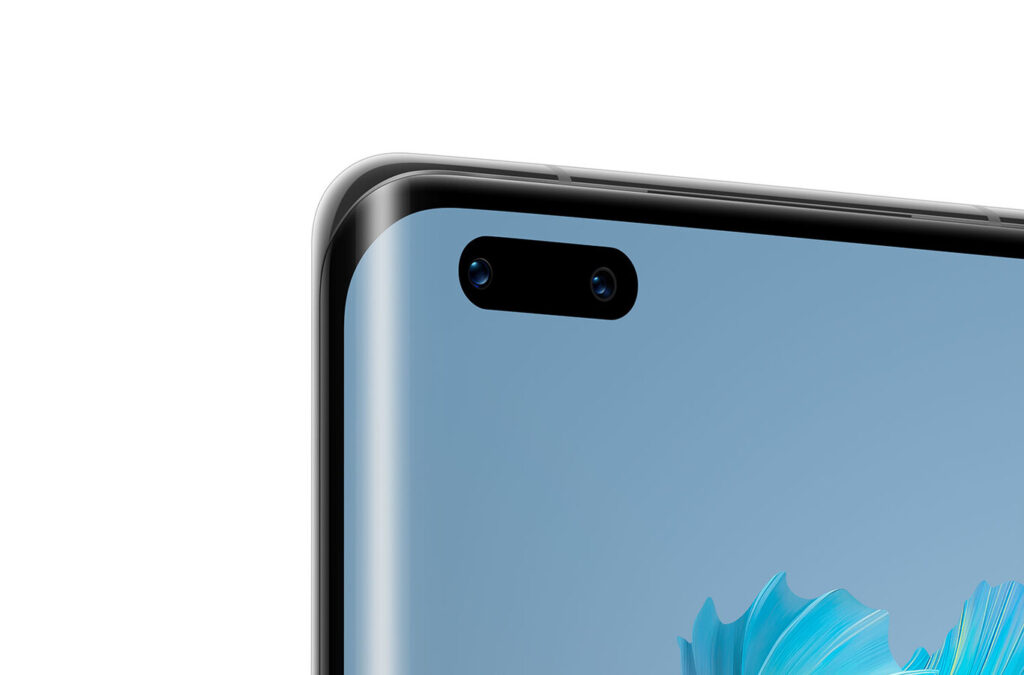
Last year the Mate 30 Pro came with a lot of curves, and the Mate 40 Pro renews the range, but it does it in a bigger diagonal.
Thus, from the 6.53 inches of last year’s model, we move on to the brutal 6.76 inches of this year’s model bringing us a spectacular (and huge) screen in our hands with a resolution of 1,344 x 2,772 pixels and also supporting 90 Hz refresh rates.
The new design is not only bigger but also changes the iPhone-type notch for a double hole on the screen where there are the new front camera and the ToF sensor of the device.
The curves, however, remain: we now have a curved screen that extends beyond the edges. On the right side, there is the power button with a distinctive red color, and above it, the buttons increase or decrease the volume.
This design is also different in the back where the camera module is circular, but unlike last year, this one has a black “ring” that includes the sensors and the camera flash, while the inner circle shows the usual collaboration between Huawei and Leica.
The result of that design idea, called ‘Space Ring Design’, is intriguing and reminiscent of those iPods with the touch wheel we used to control playback. The result is minimalist and probably more elegant and is only accompanied by Huawei’s logo on the bottom of that rear case.
Welcome to the 5 Nanos (and 5G connectivity) of the Kirin 9000
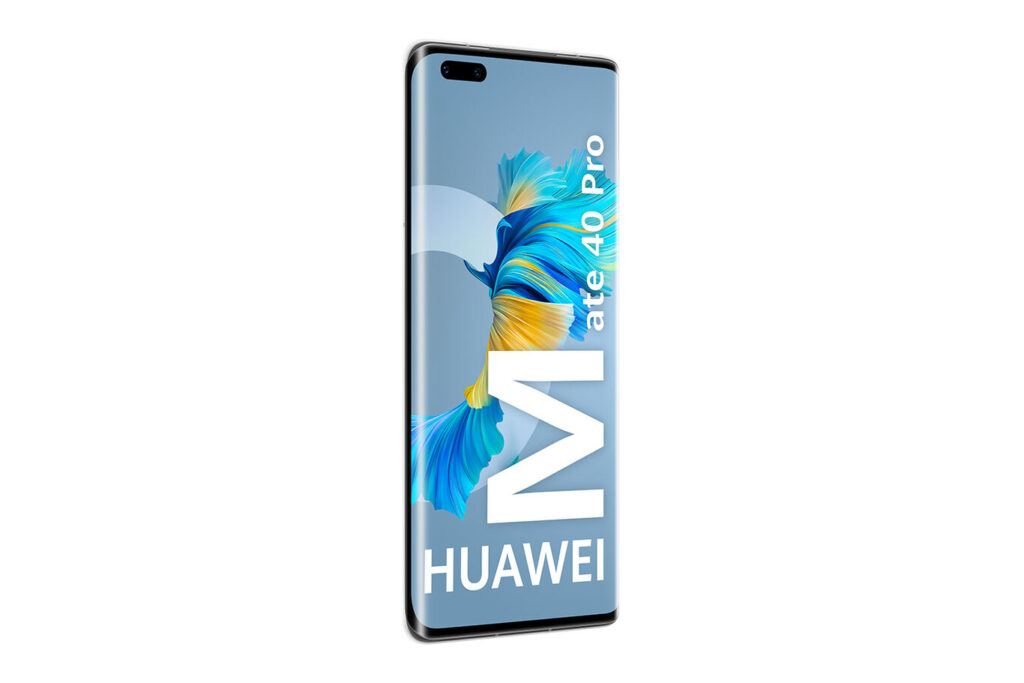
This year, Huawei also takes the opportunity to integrate its most advanced processor, the new Kirin 9000, into this flagship.
In this configuration, it makes use of four more efficient cores (Cortex-A55 at 2.54 GHz), another three more powerful ones at the same clock frequency (Cortex-A77 at 2.54 GHz), and finally, a Cortex-A77 core at a beastly frequency of 3.13 GHz that we assume will come to the fore in scenarios where an application or game needs maximum performance. According to the manufacturer, this CPU is 10% more powerful than the Snapdragon 865+.
This chip has 15.3 billion transistors and several components that are gaining ground, such as the Mali-G78 24-core GPU (according to Huawei, 52% faster than the Snapdragon 865+), as well as an NPU with two main cores and one smaller one. Also, there is an ISP with a throughput of 50% higher than that of the Kirin 990 5G
This processor also adds an option that is very much in demand by the industry – perhaps not so much by users – in this 2020: 5G connectivity support, which comes as standard on these smartphones.
This processor is also manufactured with 5 nm lithography, something that helps for greater integration and, as in every lithographic jump, to obtain more power and efficiency in the same space. It is a truly remarkable jump that, until now, we have only seen in the Apple A14 Bionic, and that undoubtedly guarantees outstanding performance in all scenarios.
This may be the key to Huawei’s decision to integrate a 4400 mAh battery that seems a bit short for such a large device – the Mate 30 Pro included a 4500 mAh battery. The processor probably helps to maintain good autonomy figures.
This battery supports a much more remarkable fast charge than the previous model since it is possible to supply up to 66 W of power, which will allow to recharge a good part of the battery in a few minutes and also not take long to recharge it completely.
The 50 MP sensor is the hero of the photographic section
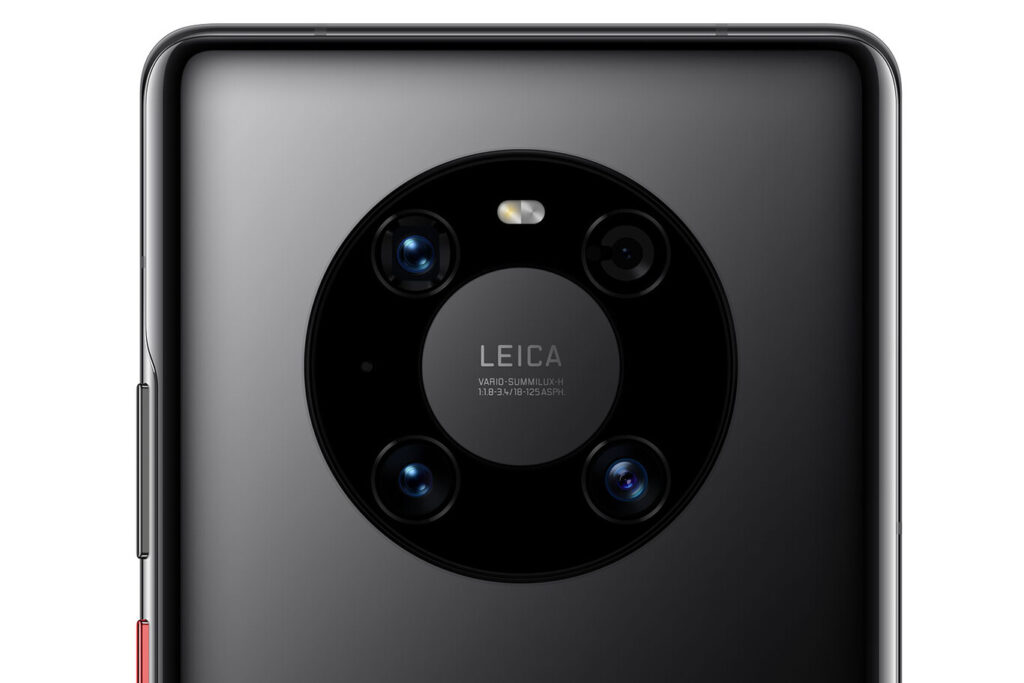
The Mate 40 Pro has a set of four sensors that make use of a circular arrangement, although as we have mentioned, the design of this module is different from last year’s.
This module, developed as usual with the collaboration of Leica, is a 50 MP Ultravision sensor with f/1.9 aperture and that will be the one responsible for the photographic performance of the mobile. This sensor is practically identical to the P40 Pro, although Huawei pointed out that the ISP has been improved and that should offer even better results.
The application of XD Fusion HDR technology allows taking advantage of algorithms that take better pictures by taking into account the information from all sensors, including those with backlighting. This type of processing is not only applied to the photo mode, but also the video mode.
Accompanying it are the 20 Mpixel ultra-wide-angle sensor and the 12 MP telephoto sensor which is capable of providing a 5x optical zoom and will also combine it with a 10x hybrid zoom and 50x digital zoom.
The new laser focus camera is also another relevant element of this photographic set, which will also offer great features in the video, as it supports 4K recording and super slow-motion recording at 720p and 3840 fps. The Super Steady Shot mode is also another element that allows for improving the quality of moving videos.
On the front, there is a 13 Mpixel camera with a pixel size of 1.23 microns that features automatic activation of the angle to take group selfies when it detects several people. This camera is accompanied by a 3D depth sensor that allows the use of biometric recognition.
Huawei Mate 40 Pro+: a special edition with a ceramic back and more zoom
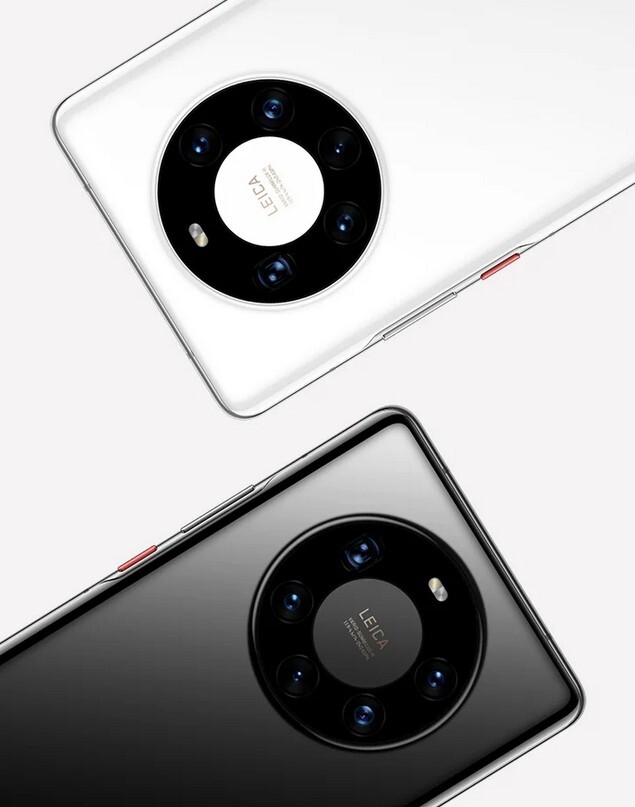
Accompanying the Huawei Mate 40 Pro will also be the Huawei Mate 40 Pro+, which will have slight differences from the models we are talking about and will retain most of the design features and specifications.
Thus, the Kirin 9000 processor is retained, but in this edition, there are 12 GB of RAM and 256 GB of capacity, although the most notable changes come on the side of the photograph.
To the cameras of the Mate 40 Pro, a “SuperZoom” sensor of 8 MP is added with the capacity to take photos with a digital zoom of 10 increases to which the stabilization of optical image is added. This model also has an anti-distortion FreeForm lens in its Ultra Wide Angle sensor which avoids those potential problems in certain shots.
The other change affects the design and construction of these devices, which will make use of a nanotechnology ceramic body that can be found in two variants: Ceramic White and Ceramic Black.
Porsche Design Huawei Mate 40 RS
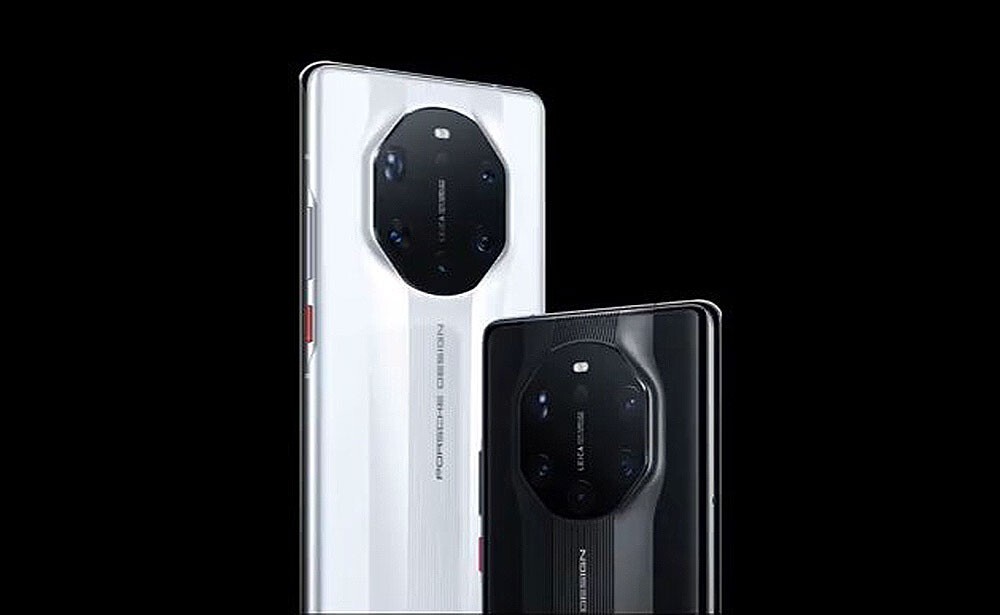
As in previous years, Huawei has collaborated with Porsche to present a special edition of these devices. This is the new Porsche Design Huawei Mate40 RS that shares many of the internal specifications of the Mate 40 Pro+ but goes further in some sections.
For example, it has 512 GB of storage capacity as standard, and the exterior design differs at the rear, where instead of a circular module of cameras is a striking octagonal module with five photographic sensors and a temperature sensor.
This model shares the four sensors of the Mate 40 Pro+, but also adds a ToF depth sensor and the aforementioned infrared temperature sensor to take thermal images from temperatures of -20 °C to 100 °C.
As in the rest of the family, there are dual speakers and IP68 resistance, and there is also fast charge support both wired (up to 66 W) and wireless (up to 50 W).
Google Application and Service Still Not Accessible
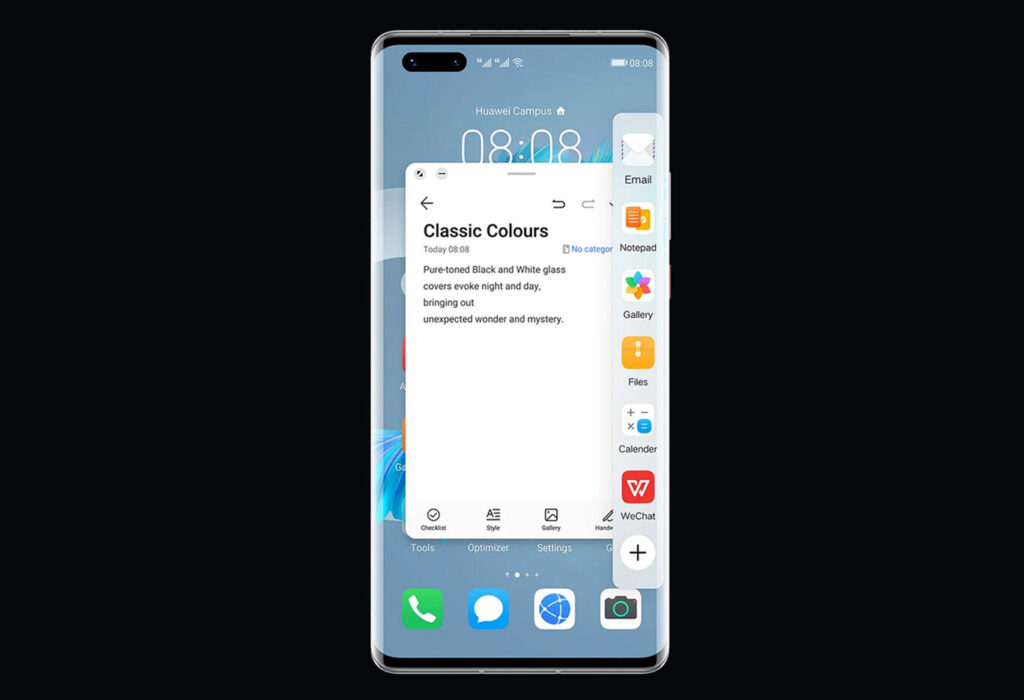
Those responsible for this firm have been competing for some time in a market that does not make it easy, and the Mate 40 Pro is another example of this because as in recent months it will not be possible to officially access Google applications and services.
The basis of software platform that governs this mobile is Android 10, but without those Google components that for example give access to your Google Play store or applications such as Gmail, YouTube, or Google Maps.
There is also the Huawei MeeTime video conferencing application and new floating window management tools that allow users to easily drag, resize, or dock them to the edges of the mobile screen.
There are also novelties in the support for connecting the mobile to Windows devices (more than one mobile can be managed at the same time) and also more potency for the notebook application when extracting text from images or sharing those texts in other applications.
Price and Availability of the Huawei Mate 40 Pro and Pro+, Porsche Design Huawei Mate 40 RS
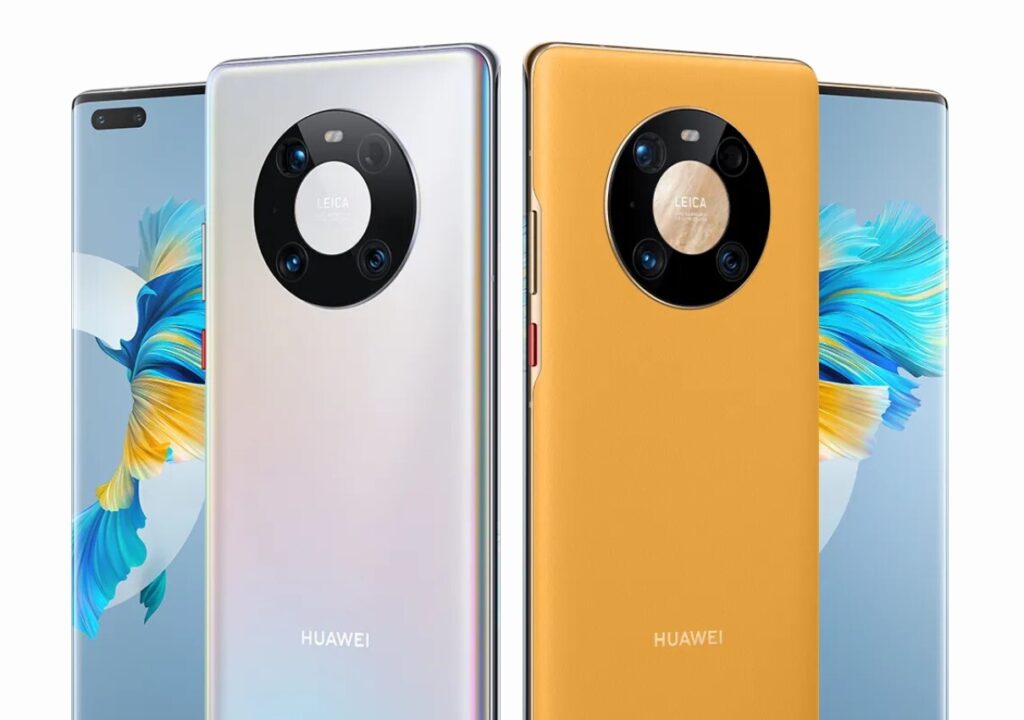
The Huawei Mate 40 Pro will arrive on November 13, 2020, and will be available in three colors, white, black, and silver. However, there will also be two variants of vegan leather with yellow and olive green tones.
The prices of these models are as follows:
- Huawei Mate 40 Pro (8 + 128 GB): €1,199(around £1099.99 / $1,430 / AU$2,010
- Huawei Mate 40 Pro+ (12 + 256 GB): €1,399 (around £1,260 / $1,655 / AU$2,330)
- Porsche Design Huawei Mate 40 RS (12 + 512 GB): €2,295 (approximately £2,070 / $2,715 / AU$3,820)
This post may contain affiliate links, which means that I may receive a commission if you make a purchase using these links. As an Amazon Associate, I earn from qualifying purchases.

